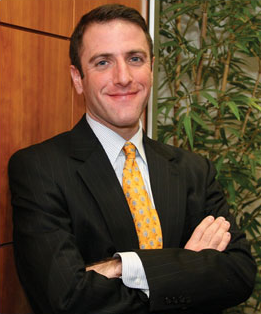Seth Pinsky, whose legacy as head of the New York City Economic Development Corporation will be years of parking-induced traffic in city neighborhoods, with taxpayers footing the bill, is headed to the private sector.
The news came this morning, via announcements from City Hall and RXR Realty, which hired Pinsky.
During Pinsky's five-year tenure, NYCEDC incentivized and financed the inclusion of suburban-style parking in development projects across the city, from Flushing to the Lower East Side, Downtown Brooklyn to Staten Island. The ethos that prioritized parking and attendant motor vehicle traffic for some of the densest neighborhoods in the most transit-rich city in America was summed up in a statement from Pinsky himself.
"The worst thing we could do," Pinsky told Streetsblog in 2010, "is create projects that create a parking need and then not provide that parking."
Outdated environmental review regulations factored into some of EDC's parking-saturated developments. But there are plenty of examples of EDC-sponsored projects, large and small, that were the product of an autocentric mindset and plain old political patronage. To name a few:
- $2 million in tax incentives for parking at a Borough Park supermarket, from a fund that was supposed to improve access to healthy food for people with low incomes
- $13 million in tax subsidies for a politically-connected parking garage operator in Jamaica
- funding a city park in Downtown Brooklyn with a 794-space underground garage
- a $19 million five-story parking garage at a Bronx hospital, financed with tax-free bonds from the 2009 federal stimulus
The grandaddy of all Pinsky-era EDC projects is probably Flushing Commons, where EDC required the development of nearly 1,600 parking spaces -- some 500,000 square feet of vehicle storage -- in the heart of downtown Flushing, one of the most transit-accessible areas in the city. Not only did the agency preserve all the spots from the municipal parking lot that Flushing Commons replaced, Pinsky's EDC and the city added 900 spaces -- and EDC and the City Council handed over millions of dollars to make parking cheaper during the construction phase.
As exemplified by Flushing Commons, EDC remained out of step with PlaNYC for the entire second half of the Bloomberg administration, while street design caught up with the 21st century.
Pinsky will be succeeded by Kyle Kimball, the current EDC executive director. Kimball won't have time to leave his mark in six months. The question is whether the next mayor will do something different with EDC, or carry on with policies that have saddled NYC neighborhoods with extraneous parking and auto traffic.






